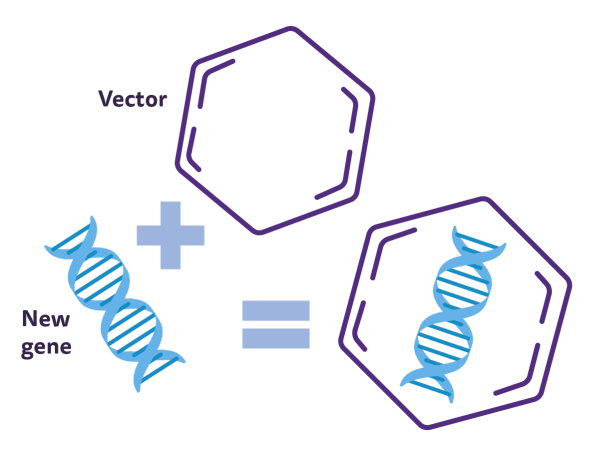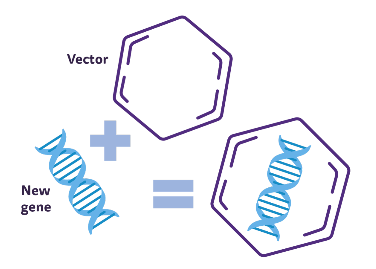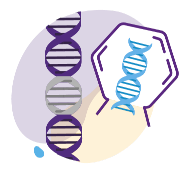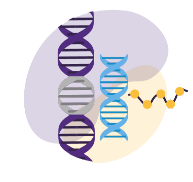Delivering the gene
To introduce a new gene through gene addition, a vehicle is needed to deliver the material to the intended target.
You can think of this vehicle as an envelope carrying the new gene to its destination. The vehicle is called a vector.
A viral vector is 1 type of vector. It is commonly used because viruses are naturally very good at entering cells.
To create a vector, scientists take a virus cell and inactivate it by only using parts of the virus. What remains is similar to an outline of the virus—it’s like an empty envelope that scientists reuse to package the working gene.


Create
Scientists create a working copy of the gene in a lab and place it inside the vector.
Target
The vector carries the new gene to the targeted location inside the cells.
Unpack
The vector unpacks the new gene, like taking a letter out of an envelope.
Build
The new gene tells the body how to build proteins to potentially change the way the body functions.
Now that you have had a glimpse of gene addition, 1 type of gene therapy, let’s move on to another type known as gene editing.
Learn more
Sign up to receive the latest resources direct to your inbox.



